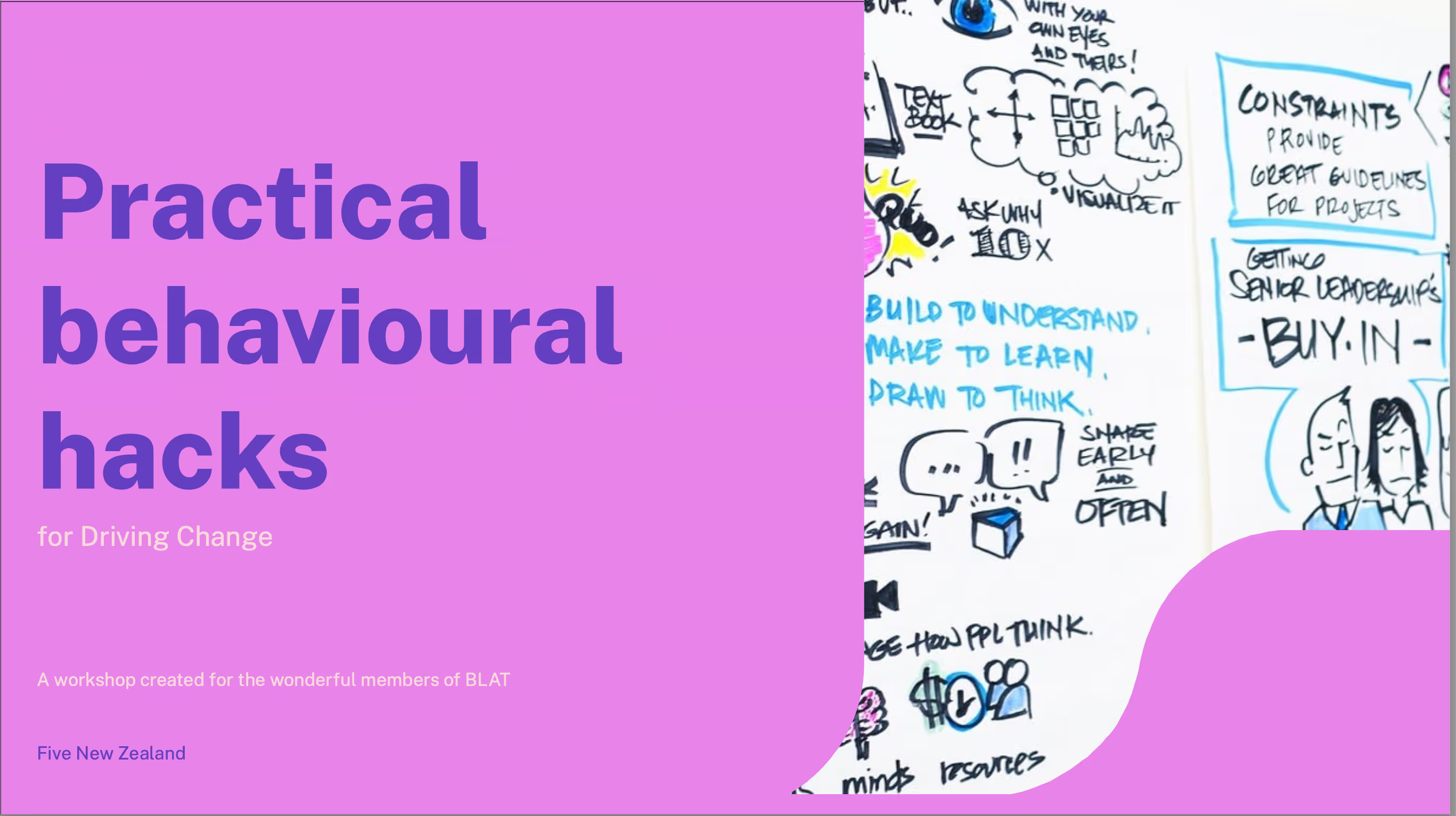Thanks for joining the Five team at BLAT. We loved seeing you, and sharing this toolkit with you.
Toolkit
B-COM refers to the Behaviour-Change Model, which is based on three key elements: Capability, Opportunity, and Motivation. These elements work together to drive behaviour change in individuals and organisations. Below is a breakdown of each component:
Capability (C) – This refers to an individual’s psychological and physical ability to engage in a specific behaviour. It includes knowledge, skills, cognitive capacity, and physical competence. If someone lacks the ability to perform a behaviour, no amount of motivation or opportunity will lead to sustained change.
• Psychological Capability: Understanding how to perform the behaviour, problem-solving, and critical thinking.
• Physical Capability: Having the necessary physical skills and abilities to carry out the behaviour.
Opportunity (O) – These are the external factors that make the behaviour possible or hinder it. Opportunity is shaped by the environment, resources, social norms, and the people around the individual.
• Social Opportunity: Support from colleagues, organisational culture, societal norms.
• Physical Opportunity: Access to tools, time, resources, or training that enable behaviour change.
Motivation (M) – The internal processes that drive behaviour, including habits, emotional responses, and reflective decision-making. Motivation can be intrinsic (driven by personal values or enjoyment) or extrinsic (influenced by rewards or recognition).
• Automatic Motivation: Habitual or instinctive responses, influenced by emotions and past experiences.
• Reflective Motivation: Conscious thought processes, such as evaluating pros and cons, planning, and goal-setting.
How B-COM Works in Practice:
For behaviour change to occur, all three elements must be addressed:
• If someone is capable but lacks opportunity, they need access to resources or a supportive environment.
• If someone has opportunity but lacks capability, training and development can help.
• If someone has both capability and opportunity but lacks motivation, incentives or mindset shifts may be necessary.
How Five uses B-COM:
We use the B-COM barriers and enablers to identify cultural challenges, causal factors, and to prioritise where targeted interventions can be used in order to drive organisational performance. We use these in our Culture Discovery, our transformation consulting, and even our needs analysis for enterprise-wide technology implementations. ANything that involves people (which is everything) has an element of behavioural friction or fluidity, so the B-COM barriers and enablers come in to play. These are like gold.
Acknowledgement:
These enabler cards were originally created by barriertool.com, and we've blended them with Five's magic 5-pillar spice.
References: Michie, S., Johnston, M., Abraham, C., Lawton, R., Parker, D., & Walker, A. (2005).Making psychological theory useful for implementing evidence based practice: aconsensus approach. BMJ Quality & Safety, 14(1), 26-33.Michie, S., Atkins, L., West, R., 2014. The Behaviour Change Wheel: A Guide To Designing Interventions. Silverback Publishing, London.

